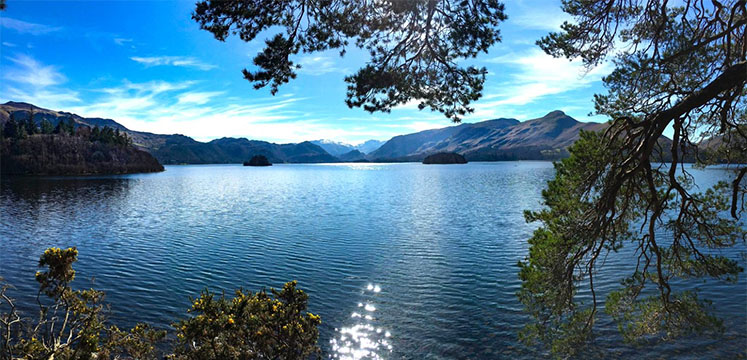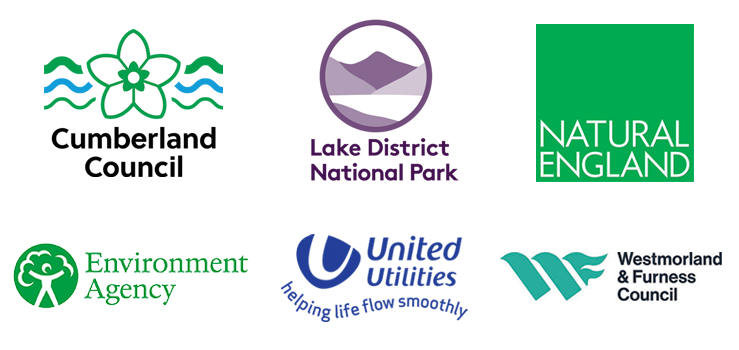


We are a partnership project comprising members from Cumberland Council, Environment Agency, Lake District National Park Authority, Natural England, United Utilities and Westmorland and Furness Council. We are supported by the Planning Advisory service. Our aim is to:
Photo Credits: Photo 1 in slider - Common Hawker C/o Cumbria Wildlife Trust, Photo 3 - Bog Asphodel C/o Cumbria Wildlife Trust, Photo 10 - Derwent Water looking torwards Cat Bells C/o West Cumbria Rivers Trust
Natural England, the organisation tasked with protecting biodiversity and ecosystems in England, is trying to protect freshwater rivers and lakes that are currently in good condition with low levels of nutrients. It is also trying to ensure any rivers and lakes that are currently in a poor condition aren’t made worse through further nutrient pollution.
In 2022 Natural England introduced new guidance in relation to four water catchments in the Lake District (and others across the country), which means new developments must not add any extra nutrients, in particular phosphates, to these catchments.
If a proposed development is going to increase nutrient levels, for example adding new houses to the area, it must have a way of removing the same amount of nutrients from somewhere else in that catchment. This is called nutrient neutrality. The catchment areas that now need Nutrient Neutrality information to be included along with their planning applications are;
Click on the circles below the map to view each of the 4 catchment areas.

Maps produced by Defra Spatial Data Science @Defra 2021, reproduced with the permission of Natural England: http://naturalengland.org.uk/ Copyright Crown Copyright and database rights 2021. Ordnance Survey licence number 100022021.
Nutrient Neutrality information is required before a planning application is validated where the proposed development is in one of the catchment areas. See our Nutrient Neutrality FAQs for further detail.
Supported by Department for Levelling Up, Housing and Communities, Lake District National Park Authority is working with Cumberland Council, Natural England, The Environment Agency, United Utilities, Westmorland and Furness Council and other partners and local planning authorities to identify and promote strategic mitigation options and solutions across affected catchments. This will support the delivery of Local Planning Authorities’ spatial strategies and enable the unlocking of existing planning applications and future proposals (particularly in respect of housing and tourism provision) without unacceptable impact upon nature conservation interests.
This work will run alongside Natural England's strategic mitigation project until Spring 2025 and;
Ricardo AEA is producing a Nutrient Mitigation Solutions Report. This, amongst other things, identifies the main sources of nutrient pollution and the most suitable locations for mitigation solutions in the four affected Cumbrian catchments. The first draft of the report has been produced and reviewed and is currently being updated. The final version will be available to view here shortly.
A Guidance Note for developers has been produced and is available to download:
Guidance Note for Developers (PDF)
A call for sites was recently carried out to identify potential nutrient neutrality (and biodiversity net gain) mitigation sites. This ended on 30th November 2023. The Catchment Nutrients Officer is currently reviewing the sites submitted for NN alongside colleagues from Cumberland Council, Natural England and Westmorland and Furness Council. Where a site is identified as having potential for NN contact will be made with the person who submitted the site. A pre-feasibility assessment will then be carried out to determine the most suitable solution.
Letter from the Chief Planner from the Department for Levelling Up, Housing and Communities to all planning authorities affected,16 March 2022.
The Catchment Nutrients Officer produces updates on the Nutrient Neutrality project. These are listed below: